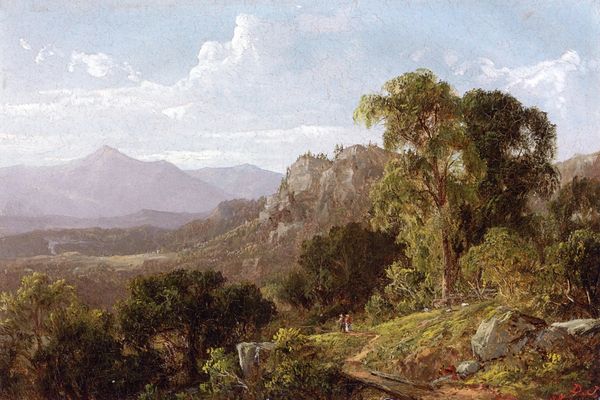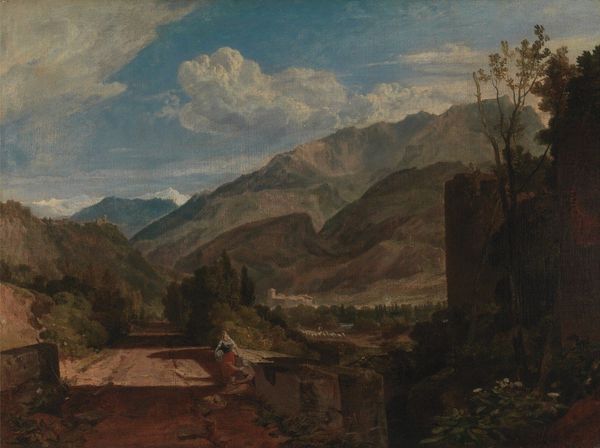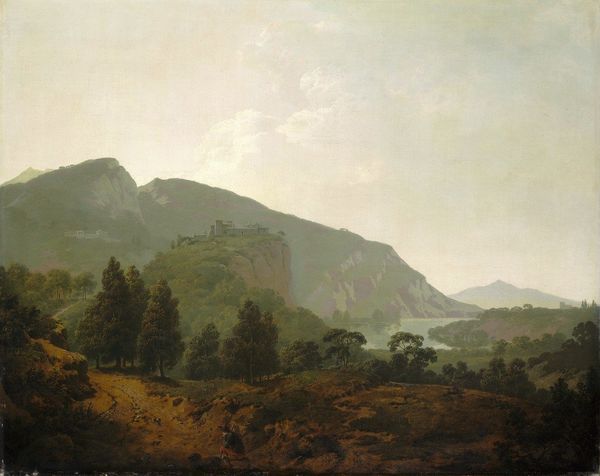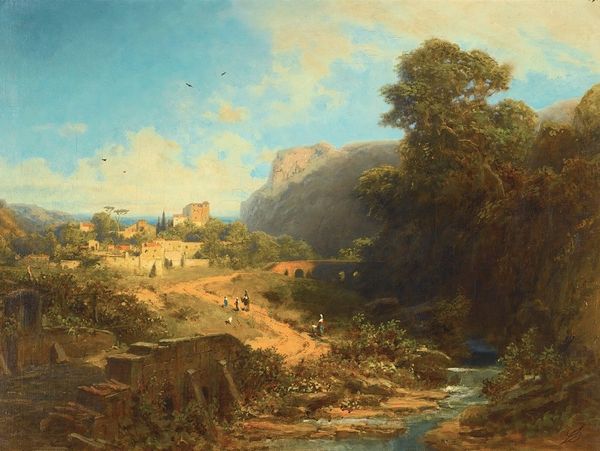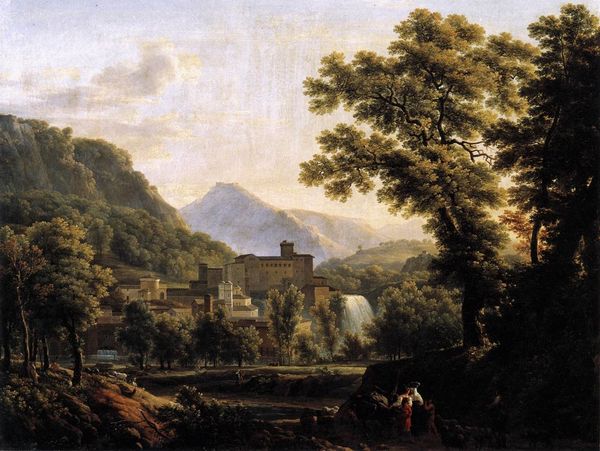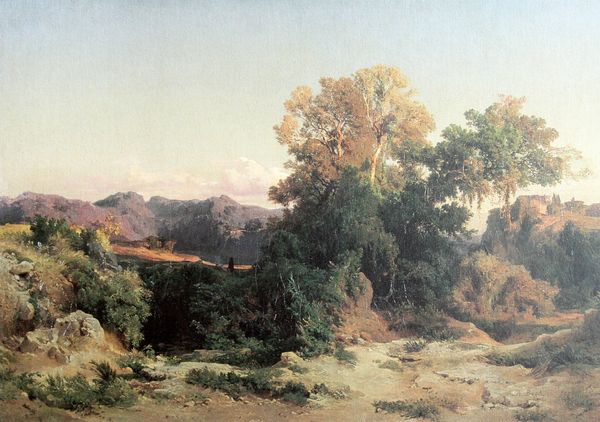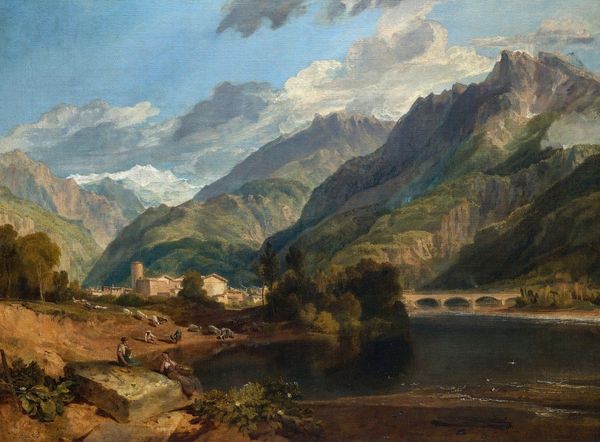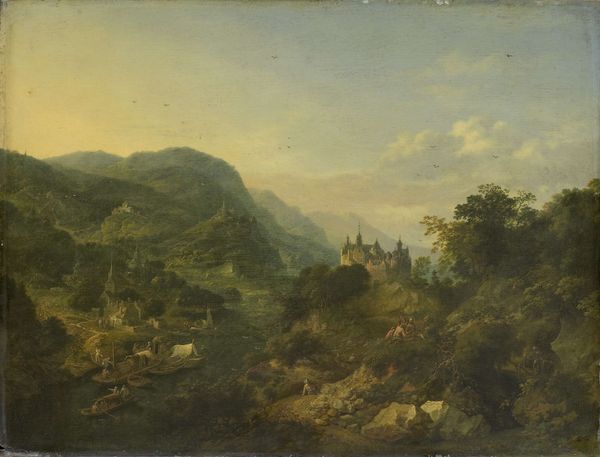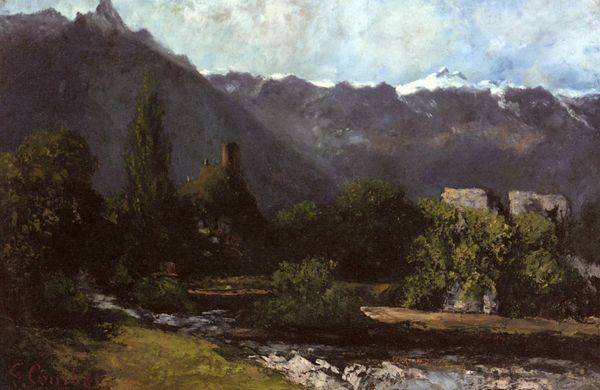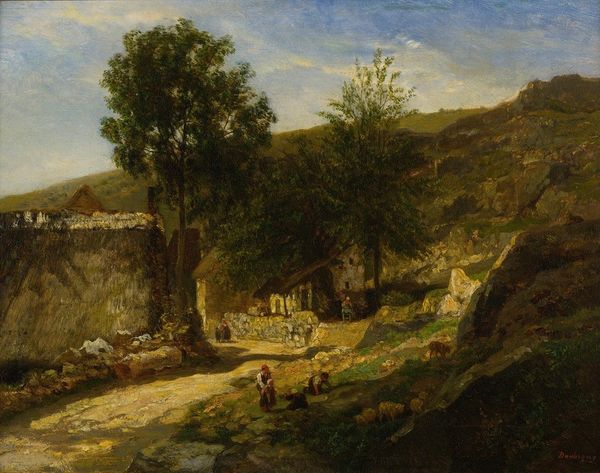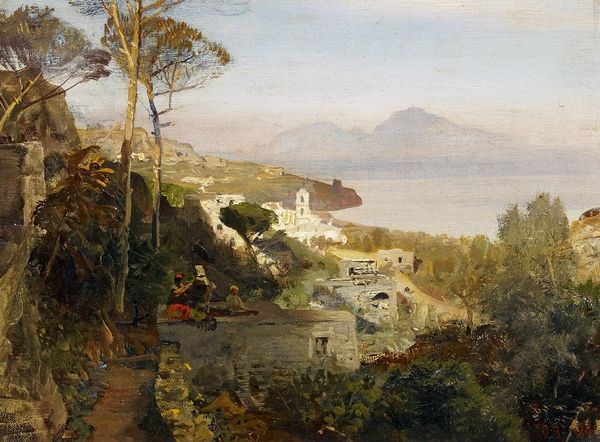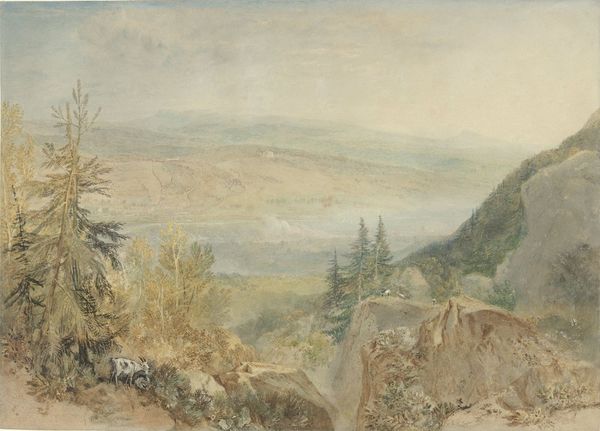
oil-paint
#
oil-paint
#
landscape
#
oil painting
#
romanticism
#
mountain
#
natural-landscape
#
genre-painting
#
history-painting
#
realism
Copyright: Public domain
Curator: Mountains of Arco at Riva, an oil on canvas painted by Ferdinand Georg Waldmüller in 1841, offers us a compelling glimpse into the Austrian artist's vision of the Italian landscape. Editor: It's initially striking because of its serenity, wouldn't you agree? There's a definite quietude emanating from the pale blues of the sky to the meticulously rendered stonework in the distance. A peaceful scene, idealized and captured with extraordinary detail. Curator: Absolutely. The detailed renderings are quite typical of Waldmüller. You'll see an emphasis on representing every rock face and leaf precisely. This approach can be understood as a challenge to the dominance of history painting, asserting landscape as a legitimate and significant genre. What do you see represented there? I mean, what about the symbolism of mountains? Editor: Mountains often function as symbols of transcendence, ambition, spiritual enlightenment, or the overcoming of obstacles. They represent enduring strength and a connection to something greater than ourselves. They tower. What do you think of those human figures on the roadside there? I'm not sure that I completely buy them. Curator: Consider their role within the system of production the work represents. This painting depicts laborers, transporting goods via a rudimentary cart and livestock. These figures represent both the utilization of natural resources and also a sort of idyllic portrayal of labor and industry during the first years of industrialization, a world undergoing intense change, depicted via hand ground pigment applied with artisanal brushes on processed canvas. Editor: That sounds bleak. The painter definitely uses pictorial rhetoric and traditions here. The inclusion of such tiny figures helps to give the image scale and emphasizes the sublime nature. And think of all the different myths and folklore associated with these lands and its geography; the figures have all these layers and histories attached to them. Waldmuller consciously paints with an understanding of this language. Curator: But it also is a demonstration of his skillful technique as a master of illusion and light as it articulates the materials of his canvas, brush, and oils! In all it allows us insight into not just how landscapes came to be understood through a critical lens, but how artistic labor changed during the period. Editor: Waldmüller successfully draws on those cultural memories, blending the familiar visual languages with this peaceful Italian setting. A work, I agree, that offers plenty for consideration and contemplation for sure.
Comments
No comments
Be the first to comment and join the conversation on the ultimate creative platform.

